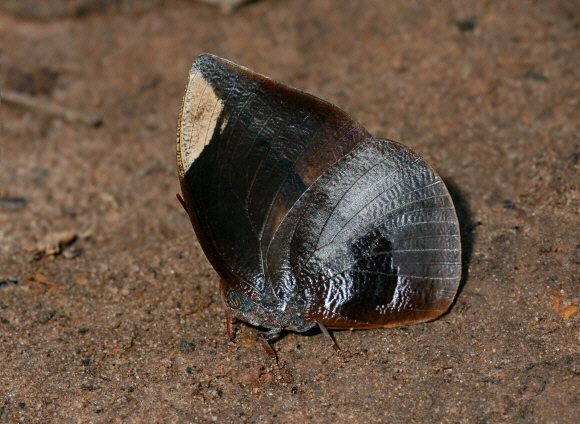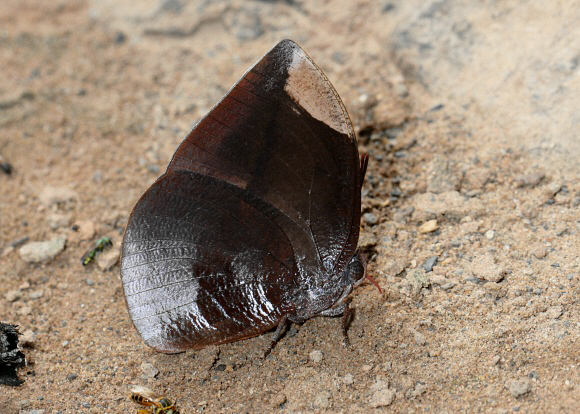
Introduction
The tribe Anaeini comprises of 87 neotropical species in the genera Coenophlebia, Consul, Anaea, Polygrapha, Memphis, Siderone, Fountainea and Zaretis. The butterflies are characterised by having a very rapid and strong flight. They have stout bodies, falcate wings, and on the upper surface are generally black, marked with bands of orange, bright red, or lustrous blue according to species. The undersides of all species in the Anaeini are cryptically patterned and bear a strong resemblance to the dead leaves, tree bark or boulders on which they settle.
The genus Memphis includes 60 species, all restricted to the neotropical region. The forewings of all species have a falcate apex, and a concave dorsum. In many species the tornus of the forewing is very acute.
Males of all Memphis species are black, with extensive metallic blue or turquoise scaling over the basal half of the wings, usually with additional blue spots or bands in the subapical area. Females are similar but usually of a different hue of blue-green and often have short tails on the hindwings.
In the case of polyxo and dia, neither sex have tails. Both species are identical on the underside. On the upperside males of polyxo have a pale blue broken band running diagonally across the apex and continuing down the outer margin of the forewing. Its close relative dia differs in that the band is broader and contiguous. Both species have a highly reflective deep blue sheen across the basal area of both fore and hind wings; and have a suffused pale clue border to the hindwings.
Memphis polyxo is found from Colombia to s. e. Brazil, and in eastern Peru and Bolivia. In Central America ( Mexico to Panama ) it is replaced by dia.

Habitats
Memphis polyxo occurs in rainforest at elevations between about 200-1000m.
Lifecycle
I have no data relating specifically to polyxo, but the following account describes the lifecycle of a typical Memphis species :
The eggs are smooth and globular. They are laid singly on leaves of the foodplants, which according to species include Piperaceae, Euphorbiaceae, Lauraceae, Monimaceae and Annonaceae.
The caterpillars are cylindrical, tapering towards the bifid tail, and covered with tiny granulations or very short bristles. They are typically green or brown, marked with a series of fine longitudinal lines. The head is large, and bears a crown of short pointed tubercles. When small, the caterpillars make frass-chains ( chains of dried droppings ) on the tips of leaves. When older they live within leaf tubes made from rolled up leaves bound together with silk, and only emerge when feeding.
The chrysalis of all species is stocky and barrel-shaped, with a very large thoracic section, and highly compressed abdominal segments. It is typically green or brownish, lightly marbled, and is suspended by the cremaster from a leaf or stem.
Adult behaviour
Like other Memphis species this butterfly spends most of its life in the upper canopy. It is however strongly attracted to rotting fruit, mammalian dung or carrion on the forest floor. It will feed in deep shade in the early morning, often in company with Brassolini. Later in the day it can sometimes be found feeding in damp semi-shaded situations, or even in full sunlight.
The wings are always kept tightly closed when the butterflies are feeding. If disturbed they fly up onto nearby understorey foliage. They typically spend several minutes there and often open their wings fully to bask in the dappled sunlight. After a while when they feel it is safe enough to return, they descend in stages, eventually settling on the forest floor to resume feeding.

Memphis polyxo, male, Satipo, Peru – Adrian Hoskins
